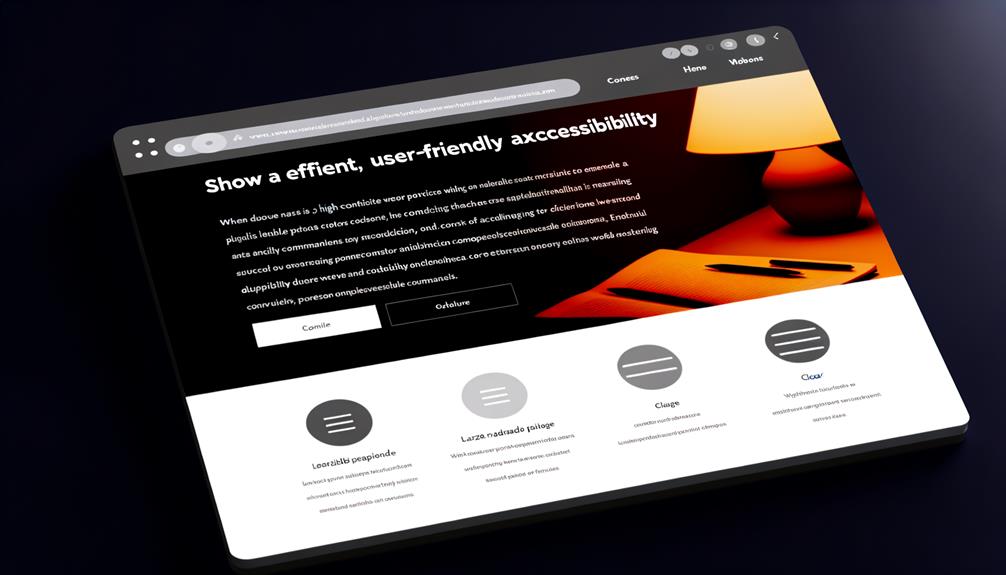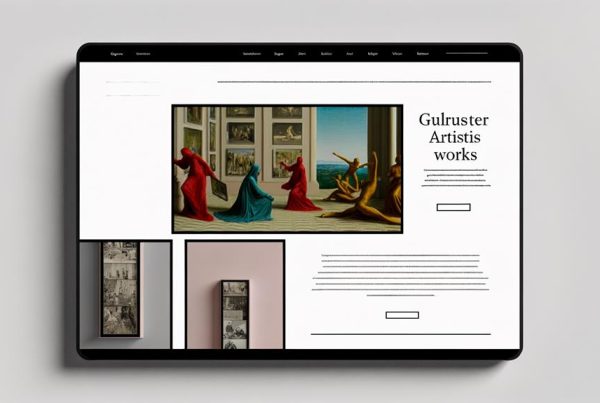In today's digital landscape, designing for accessibility is akin to constructing a physical building with ramps and elevators to make it accessible to everyone, regardless of mobility. It's not merely an option but a necessity.
As we embark on this exploration of accessibility design, we uncover the intricate web of considerations that go into creating an online environment that caters to the diverse needs of users.
From legal requirements to the practical benefits for businesses, our guide offers a comprehensive roadmap for embracing accessibility as a core tenet of design.
So, let's delve into the world of inclusive digital experiences and uncover the transformative power of accessible design for both users and businesses alike.
Understanding Designing for Accessibility
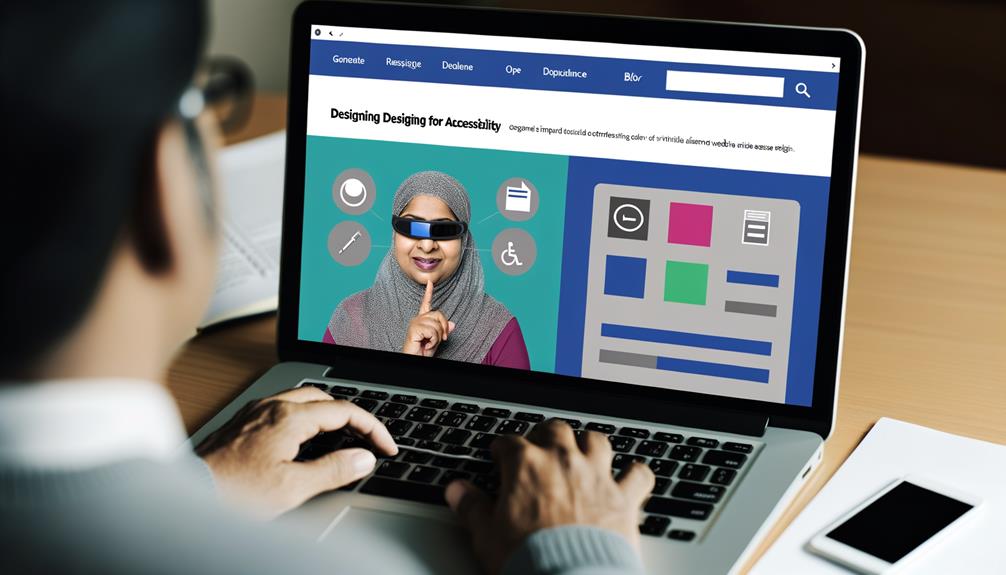
Understanding designing for accessibility is crucial for creating inclusive digital experiences that cater to a diverse audience, including individuals with disabilities. Designing for accessibility means removing barriers and ensuring that everyone, regardless of ability, can access and interact with digital content.
It's about acknowledging the diverse needs of users and crafting digital experiences that empower rather than exclude. By embracing accessibility, we liberate individuals with disabilities, providing them with equal opportunities to engage with online content. This isn't just a moral imperative; it's a legal requirement in many regions.
Embracing accessibility from the outset not only enhances user experience for all but also demonstrates a commitment to inclusivity, fostering trust and respect within our communities. Let's prioritize accessibility in our designs, advocating for liberation and equality through our digital creations.
The Benefits of Accessibility Design
Embracing accessibility in our designs significantly expands the reach and impact of our digital content, benefiting a diverse audience, including individuals with disabilities. By prioritizing accessibility, we not only comply with legal requirements but also tap into a vast market of over 12.6% of the U.S. population with disabilities. Our commitment to accessibility leads to an improved user experience for all, enhances search engine optimization, and builds trust with socially responsible customers. Designing with accessibility in mind from the outset saves costs in the long run and contributes to a positive brand reputation. Here's a breakdown of the benefits:
| Benefits of Accessibility Design | |
|---|---|
| Expanded Audience Reach | Improved User Experience for All |
| Enhanced Search Engine Optimization | Cost Savings and Positive Brand Reputation |
Guidelines for Designing Accessible Websites
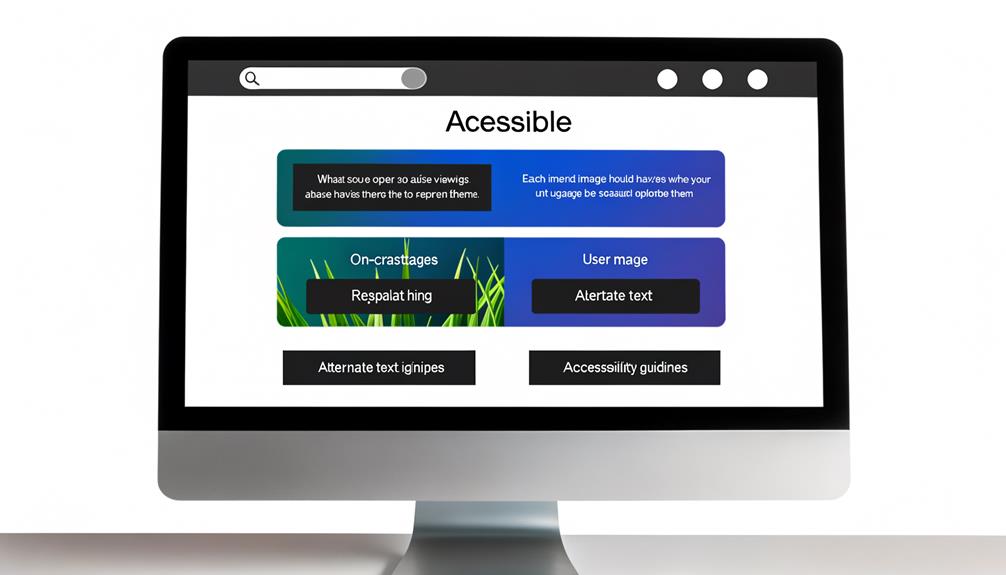
Our commitment to accessibility not only expands the reach and impact of our digital content but also sets the stage for discussing the essential guidelines for designing accessible websites.
When designing for accessibility, it's crucial to adhere to specific guidelines to ensure inclusivity and usability for all individuals. Here are four key principles to consider:
- Perception: Ensure content can be accessed by users with varying sensory abilities, such as providing captions and alt text.
- Operability: Enable easy navigation and interaction, including support for screen readers and voice-assisted tools.
- Understandability: Implement simple navigation to make the website easy to explore for individuals with cognitive disabilities.
- Robustness: Build and format content to be easily interpreted by different assistive technologies, using semantic HTML tags.
Following these guidelines fosters a digital environment that prioritizes liberation and inclusivity for all users.
Implementing Accessibility Into Website Design
To ensure our website design is inclusive and accessible to a diverse audience, we prioritize implementing accessibility features from the outset. By incorporating accessibility into the foundation of our design, we empower all users to access and interact with our content. This proactive approach demonstrates our commitment to inclusivity and social responsibility.
We adhere to the Web Content Accessibility Guidelines (WCAG) and integrate features like alternative text for images, clear navigation, and compatibility with assistive technologies. Our dedication to accessibility not only enhances the user experience but also aligns with legal requirements and contributes to improved search engine optimization.
Embracing accessibility from the start not only saves costs in the long run but also strengthens our brand reputation and fosters trust with our audience.
Impact of Accessibility Design
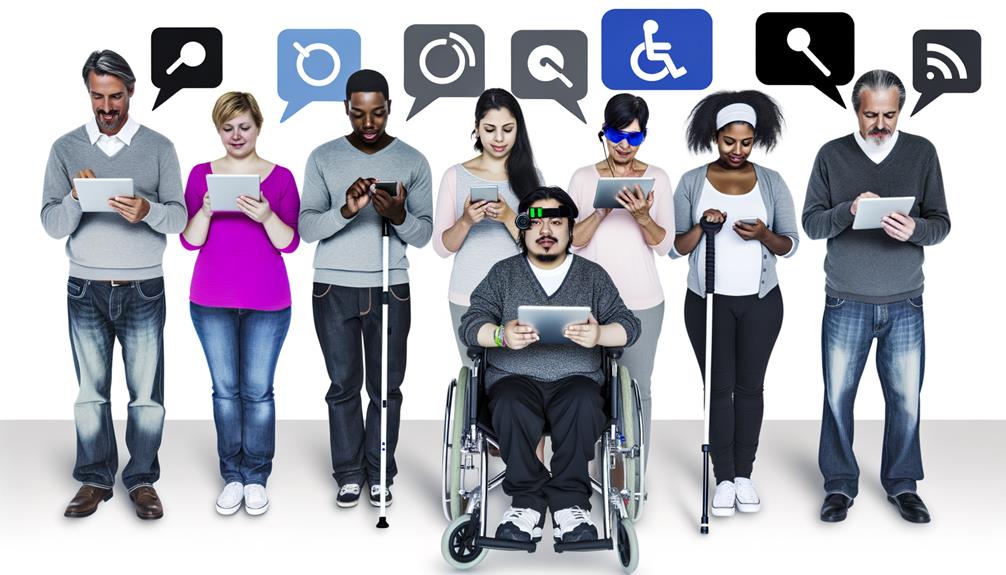
Prioritizing accessibility from the outset not only enhances the user experience but also aligns with legal requirements and contributes to improved search engine optimization, demonstrating our commitment to inclusivity and social responsibility.
- Enhanced User Experience: Designing for accessibility ensures that all users, regardless of disabilities, can navigate and interact with our digital products seamlessly.
- Legal Compliance: By prioritizing accessibility, we adhere to legal requirements such as the Americans with Disabilities Act (ADA) and the EU directives on digital accessibility standards.
- Improved Search Engine Optimization: Accessibility design guidelines contribute to improved search engine optimization (SEO) by making our website easier to navigate for both users and search engine bots.
- Cost-Efficiency: Designing with accessibility in mind from the beginning saves money in the long run compared to retrofitting accessibility features.
Best Practices for Accessible Web Design
Following accessibility best practices is essential for creating inclusive and user-friendly web designs that cater to a diverse audience. It's crucial to prioritize accessibility from the outset of web design to ensure equal access for all users. Here are some best practices to guide accessible web design:
| Best Practices | Description |
|---|---|
| Use clear and descriptive link text | Make sure link text clearly describes the destination |
| Provide alternative text for images | Include descriptive alt text for images for screen reader users |
| Ensure keyboard navigation | Enable users to navigate and interact with the website using only a keyboard |
Frequently Asked Questions
How Can I Test the Accessibility of My Website?
We can test the accessibility of our website by using automated tools like Lighthouse and Axe. These tools can identify common accessibility issues.
Additionally, manual testing is crucial to catch issues that automated tools might miss. This includes testing keyboard navigation, screen reader compatibility, and color contrast.
Conducting user testing with individuals with diverse abilities provides valuable insights into how accessible our website truly is. It also helps us make necessary improvements.
Are There Any Specific Legal Requirements for Website Accessibility in Different Countries?
Yes, there are specific legal requirements for website accessibility in different countries.
For example, in the USA, web accessibility is a legal requirement under the Americans with Disabilities Act (ADA), and the EU has also passed directives on digital accessibility standards.
These regulations are crucial for ensuring equal access to online content for individuals with disabilities.
It's essential to stay informed about these legal requirements to ensure compliance and inclusivity.
What Are Some Common Misconceptions About Designing for Accessibility?
Common misconceptions about designing for accessibility include thinking it's costly and only benefits a small group. In reality, it enhances user experience for everyone and saves money in the long run.
Some believe accessibility compromises aesthetics, but it's possible to create visually appealing designs while being accessible.
Another misconception is that accessibility only benefits people with disabilities, but it actually widens audience reach and builds trust with socially conscious customers.
How Can I Make Sure That My Website Is Accessible to Individuals With Cognitive Disabilities?
To ensure our website is accessible to individuals with cognitive disabilities, we must prioritize simple navigation and clear content presentation.
Implementing easy-to-understand language, concise information, and intuitive site structure helps create a user-friendly experience.
Utilizing semantic HTML tags and providing descriptive alt text for images aids assistive technologies in interpreting and delivering content effectively.
What Are Some Common Challenges in Implementing Accessibility Features Into an Existing Website?
Implementing accessibility features into an existing website poses challenges such as retrofitting complex code and ensuring seamless integration with existing design elements.
It requires a comprehensive assessment of the current website's functionality and may involve significant redevelopment.
We must prioritize identifying and addressing barriers to access, and diligently adhere to accessibility standards to ensure a user-friendly experience for all.
It's fundamental to integrate accessibility from the outset to avoid costly retrofits and reach a broader audience.
Conclusion
In conclusion, designing for accessibility isn't just a choice, but a responsibility. By embracing inclusive design principles and practices, we can create online experiences that are welcoming and accommodating for all individuals, regardless of their abilities.
The benefits of accessibility design are far-reaching, impacting user experience, search engine optimization, and the overall reach of digital content.
Let's prioritize accessibility and ensure that our online environment is truly inclusive for everyone.


